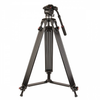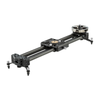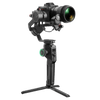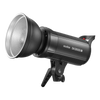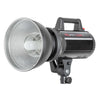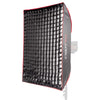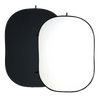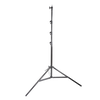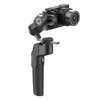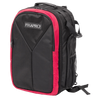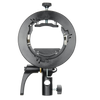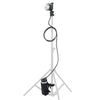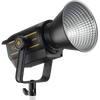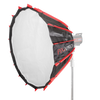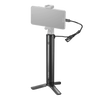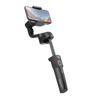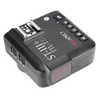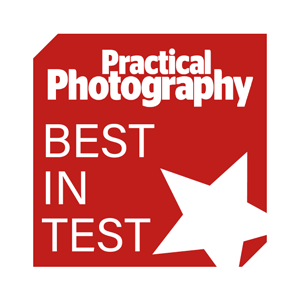Choosing the right Flash Power for you
Each strobe has a variety of different specifications to help show the differences between the competitors and make it stand out. But honestly, most photographers only have three specific things in mind when it comes to deciding which light to choose. These three things are Features, Price and Power, and in this Blog, we will look into the power aspect of flash lighting.
To understand what flash power you require, you first need to understand the measurements that are used to indicate power, and these measurements are called watt-seconds (Ws). Watt-seconds are the maximum number of watts that can be output over a 1 second period. For example, imagine the lightbulbs in your house. Each lightbulb will have a different maximum output to suit any given room, so your living room main light could have a 100W maximum output and your bedside lamp could have a 60W, to compensate for the power required in those situations.
Most of our PiXAPRO flash lighting will have numbers in their name, i.e. PIKA200 and CITI600 PRO, and these numbers are usually used to show what the power output is for each light. So, for instance, the PIKA200 offers a maximum output of 200Ws whereas the CITI600 PRO offers a maximum output of 600Ws. These lights have different maximum power outputs due to the fact that they are to be used in different situations and different shoots. So, the next time you are deciding which PiXAPRO flash lighting to choose, the numbers in the name will usually give you an idea of the maximum power you will have available.
Now, when it comes to flash power, you need to be careful to make sure that you are using the right amount. Not only is it possible to have too little power, but it is also a very good possibility to have too much power for your particular shoot. For instance, if you are shooting pet photography and try to use a 1200Ws Flash, you are going to scare the animal and have a troublesome shoot. And if you use a 200Ws Flash to try and shoot a Vehicle, you simply are not going to be able to offer the required amount of coverage to create a good image. This is where people sometimes get confused and stuck about choosing which flash lighting they will need for their particular shoot. So, we have come up with a simple guide to try and help offer an insight into which lighting is best for each scenario:
- 200Ws – Small children & new-borns, pet photography, small product photography, hobbyists & home studios, small groups of up to 2 people
- 400Ws – Advanced home studios, larger product photography, High-quality portrait photography, medium groups of up to 6 people
- 600Ws – Small studios, outdoors & location photography, vehicles, large groups up to 20 people
- 1200Ws – Professional & large studios, and locations, photographing large interiors.
As each flash has its own power output, being able to control the amount of power being used by each is very important. Sometimes you may find that maximum power is too strong for a particular shoot, so being able to lower the power of the flash can be very helpful. This can be achieved as each flash has its very own flash power range. For instance, the CITI400 PRO has the ability to go from full power 1/1 all the way down the 1/256 of the power, allowing you to adjust the flash to suit any requirements. But each adjustment in power has to be controlled equally, and this is done in increments known as ‘Stops’. The CITI400 PRO has increments of 1/10 stops, so you will be able to adjust the power 10 times before you completely go from 1/1 power to ½ power. These increments will be the same for every change in power, whether it is from 1/1 power to ½ power or 1/64 power to 1/128 power. Below, we have created a table to show all of our flashes and what their power range is and the stop increments each light has, to further help illustrate how you are able to control the power of your chosen flash.
| Flash Models | Power Range | In Increments of |
| LUMI II Series | 1/1 - 1/32 | 1/10 Stop |
| KINO II+ Series | 1/1 - 1/32 | 1/10 Stop |
| STORM II Series | 1/1 - 1/128 | 1/10 Stop |
| CITI600 PRO | 1/1 - 1/256 | 1/10 Stop (Firmware V1.3 or later) |
| CITI400 PRO | 1/1 - 1/256 | 1/10 Stop |
| CITI600 TTL | 1/1 - 1/256 | 1/3 Stop |
| CITI600 Manual | 1/1 - 1/256 | 1/3 Stop |
| PIKA200 | 1/1 - 1/128 | 1/3 Stop |
| HyBRID360 Series | 1/1 - 1/128 | 1/3 Stop |
| RIKO400 Ring Flash | 1/1 - 1/128 | 1/3 Stop |
| Li-ion580II Series Speedlites | 1/1 - 1/128 | 1/3 Stop |
| Li-ion350II Series Speedlites | 1/1 - 1/128 | 1/3 Stop |
In summary, whilst it is important to make sure that you have the correct powered flash lighting for your particular field of photography, most photographers will end up using multiple lights that offer different powers. And most powerful lights can have their power lowered and adjusted to match their required shoots. So, it isn’t the worst thing if you end up buying a light that is slightly too powerful or too weak for the job because it is always possible to adjust your shoot to achieve whatever look you are aiming for.







































